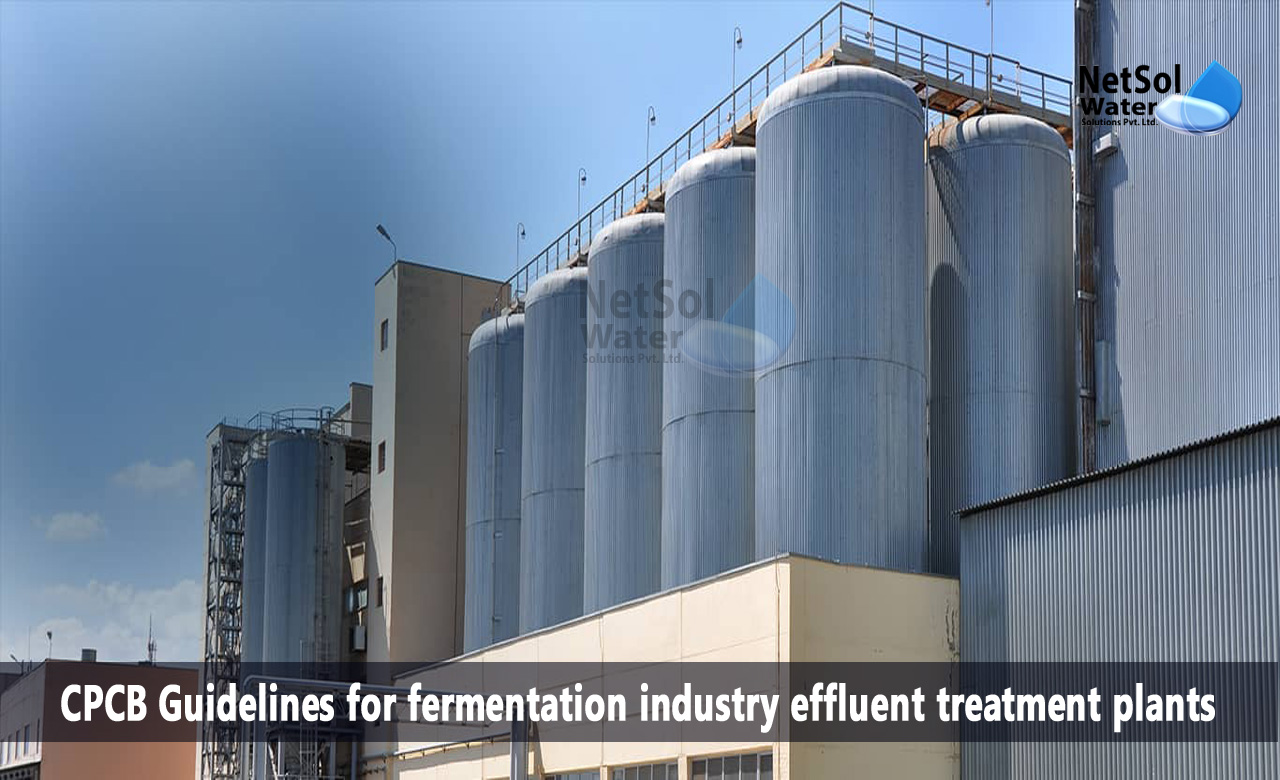Effluent treatment is the process of eliminating solid, chemical, and organic materials from wastewater, produced by industries as a by-product of the production process. The water is recycled for industrial use, or safely released into the environment.
Effluent from fermentation process
The fermentation effluent might be a useful source for making hydrogen. Acetic acids, butyric acids, propionic acids, lactic acids, formic acids, and ethanol, are examples of its by-products.
Let's understand the CPCB guidelines for effluent treatment plants for fermentation Industries!
Why is effluent treatment crucial for businesses?
Water is used in industrial production operations. For instance, water cooling systems, food and beverage facilities, and pulp and paper mills.
Effluent Treatment Plant: How does it operate?
The wastewater produced by factories is treated at the Effluent Treatment Plant (ETP) in a number of steps. Acid, oil, grease, and other solid materials like plastic and paper are present in the influent water. Water from the effluent is released into the environment or recycled for use in industries.
CPCB Guidelines for fermentation industry ETP Plants
|
S. No. |
Parameters |
Standards Limiting Concentration in mg/l, except for pH |
|
1. |
pH |
5.5-9.0 |
|
2. |
colour |
All efforts should be made to remove colour, and odour as far as practicable |
|
3. |
TSS |
100 |
|
|
Disposal into inland surface such as water bodies |
30 |
|
|
Disposal on land surface or irrigation |
100 |
How to treat effluents from fermentation process?
The flora and wildlife are adversely affected by the harmful toxicants, found in the effluents from fermentation units, which also significantly lower the dissolved oxygen levels.
Chemical, physical, and biological processes can all be used to treat effluent. Treatment methods for industrial wastewater include oxidative ponds, spray irrigation, well disposal, and incineration.
Treatment of fermentation effluent with Sludge Anaerobic Digestion
Since, treating sludge with anaerobic digestion is the most popular methods, this can be achieved by allowing the sludge to break down in digesters for several weeks, in carefully monitored conditions. Digesters are closed tanks with features for sludge addition, mild agitation, and gas emission. The conversion of living matter into gas, predominantly methane, occurs at a rate of about 50%.
Typically, anaerobic microbial digestion involves four steps:
1. Initial Extracellular Hydrolysis (e.g., Cellulose)
2. Acetate and other organic acids (VFAs) such as CO2, and H2 are produced during fermentation
3. Fermentation, which produces acetic acid (CH3COOH), H2 and O2
4. Methanogenesis, which produces CH4, CO2, and H2O
Biological Nitrogen Removal
Both activated sludge and percolating filter plants can incorporate biological nitrogen removal processes. The general mechanism is based on denitrification and nitrification, which is the process by which ammonia is transformed into nitrite and nitrate.
The majority of the time, biological denitrification processes use recycled nitrified wastewater as a source of nitrate. As a result, complete removal is not achievable. Only nitrate from the stream that is recirculated will be eliminated.
How can we assist?
Netsol Water offers a wide range of wastewater treatment solutions, such as water softeners, wastewater treatment plants, sewage treatment plants, water treatment plants, RO Plants, as well as effluent treatment plants for various industries, including the fermentation industry.
Netsol Water is Greater Noida-based leading water & wastewater treatment plant manufacturer. We are industry's most demanding company based on client review and work quality. We are known as best commercial RO plant manufacturers, industrial RO plant manufacturer, sewage treatment plant manufacturer, Water Softener Plant Manufacturers and effluent treatment plant manufacturers. Apart from this 24x7 customer support is our USP. Call on +91-9650608473, or write us at enquiry@netsolwater.com for any support, inquiry or product-purchase related query.



